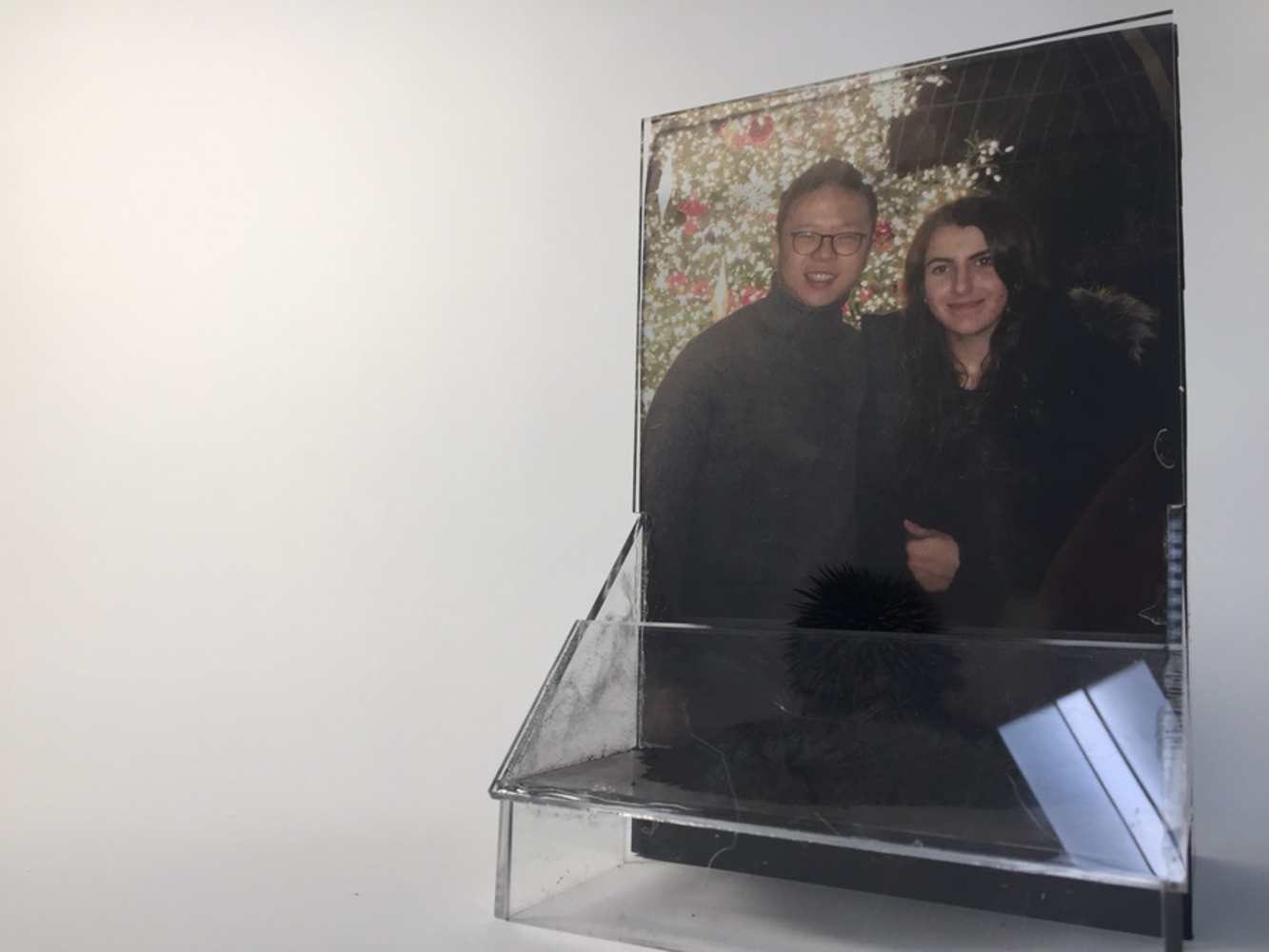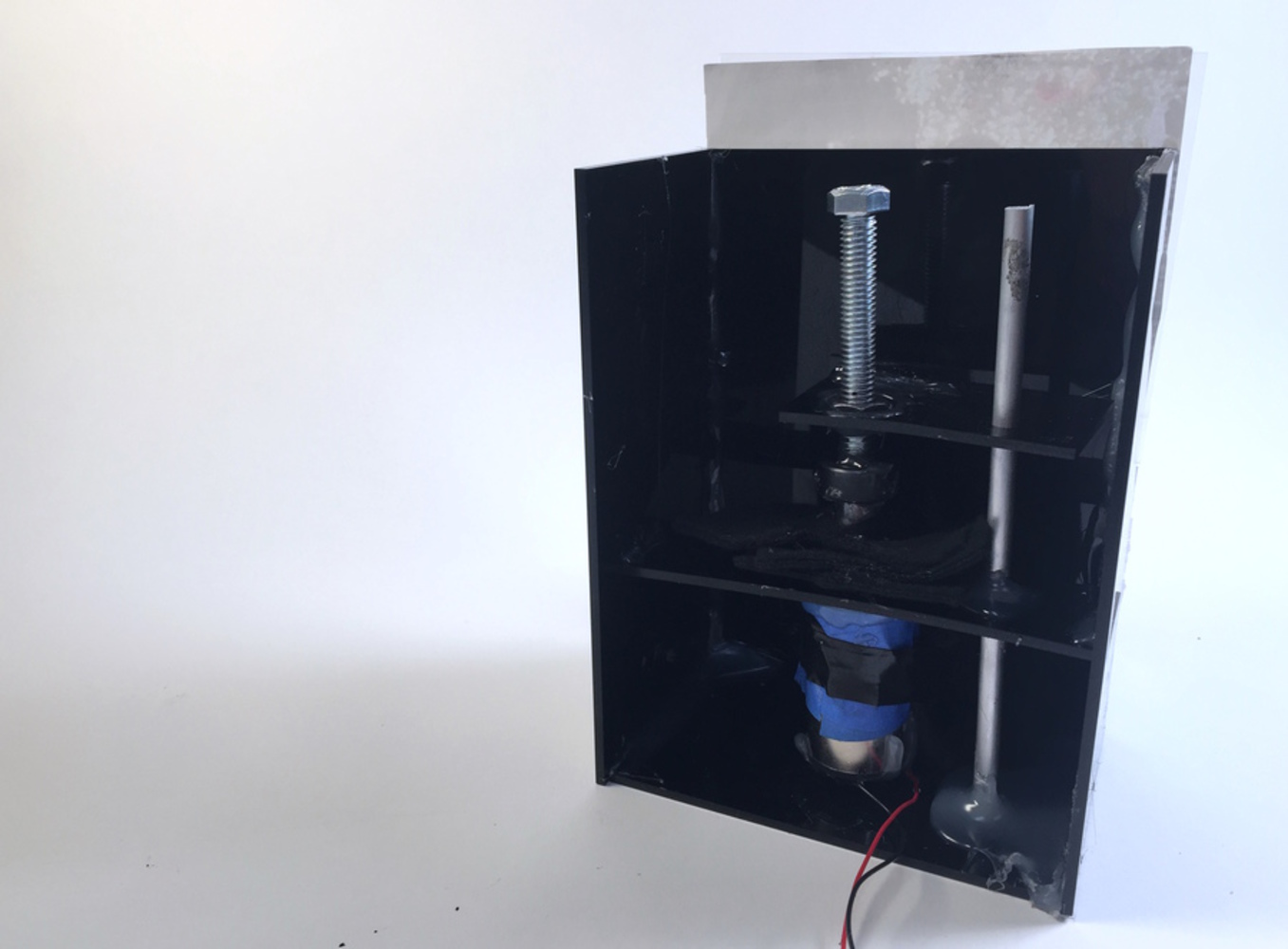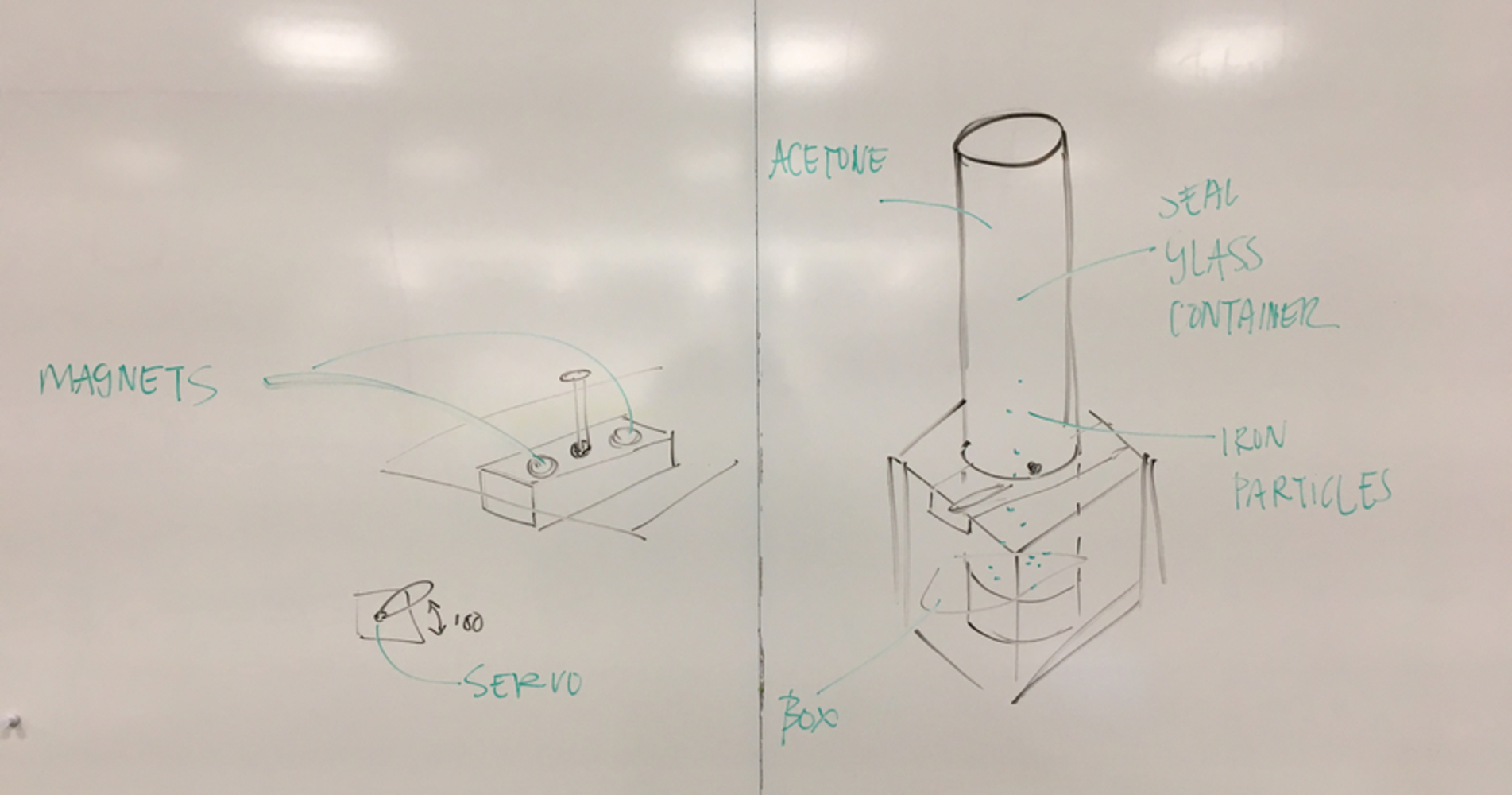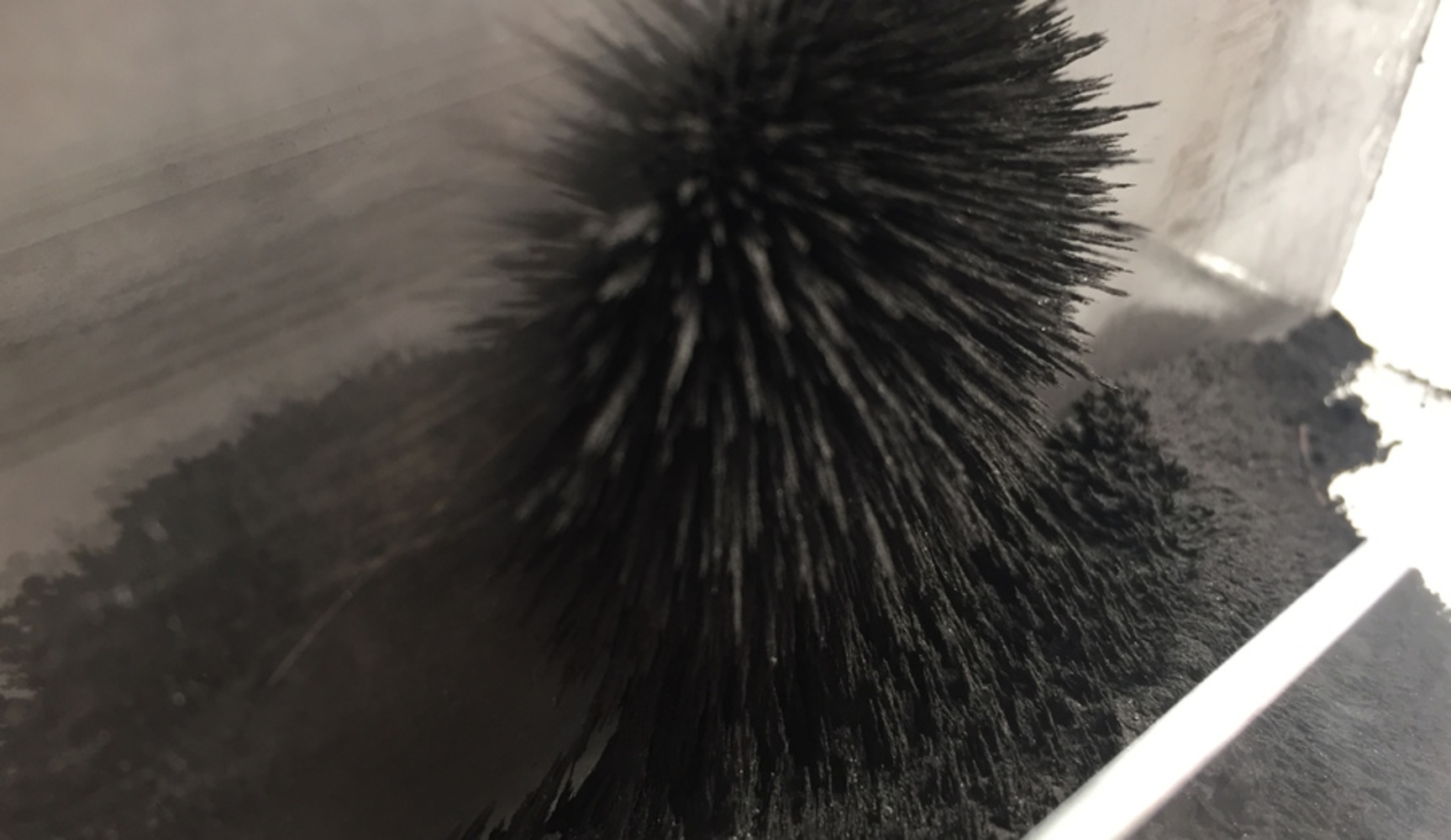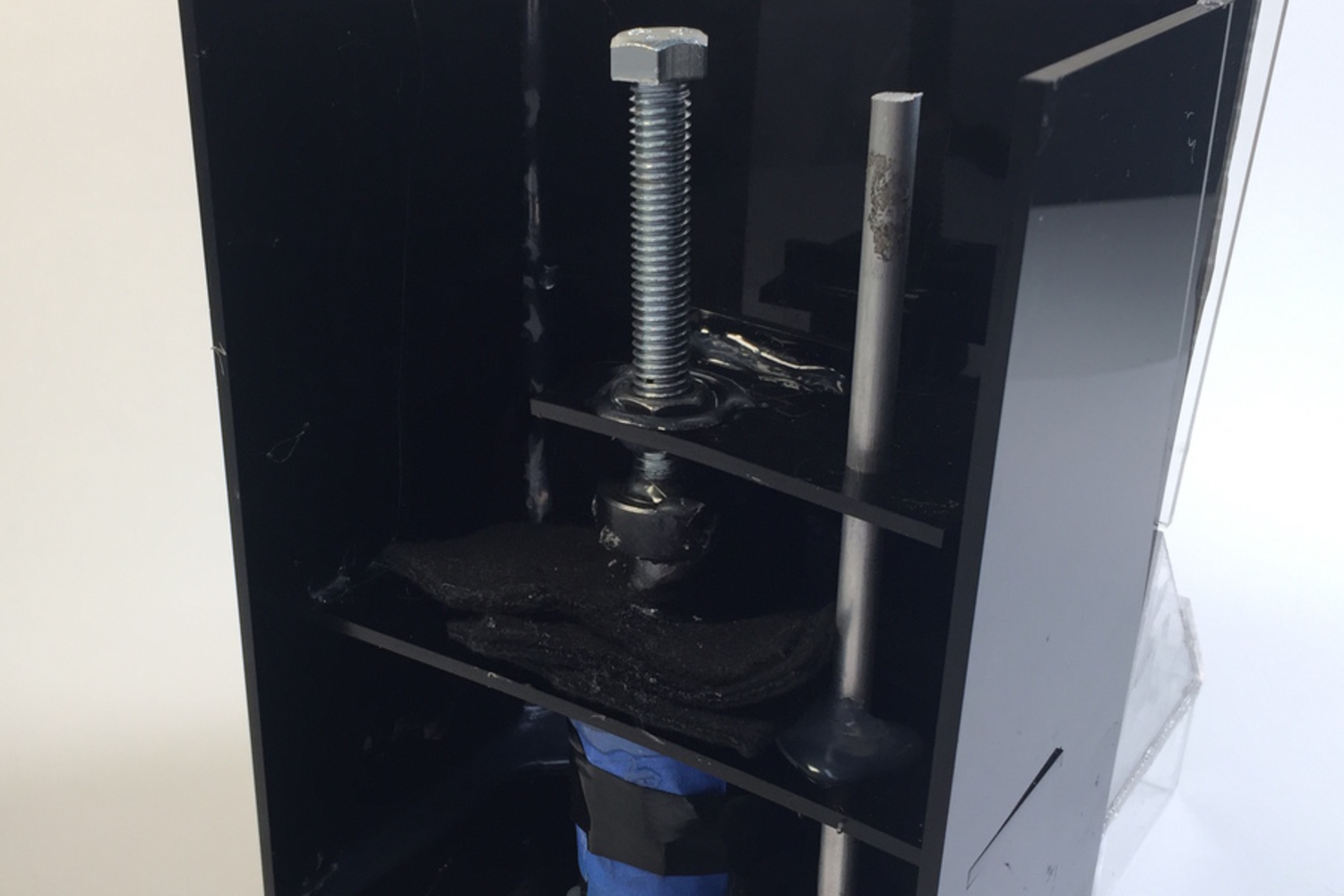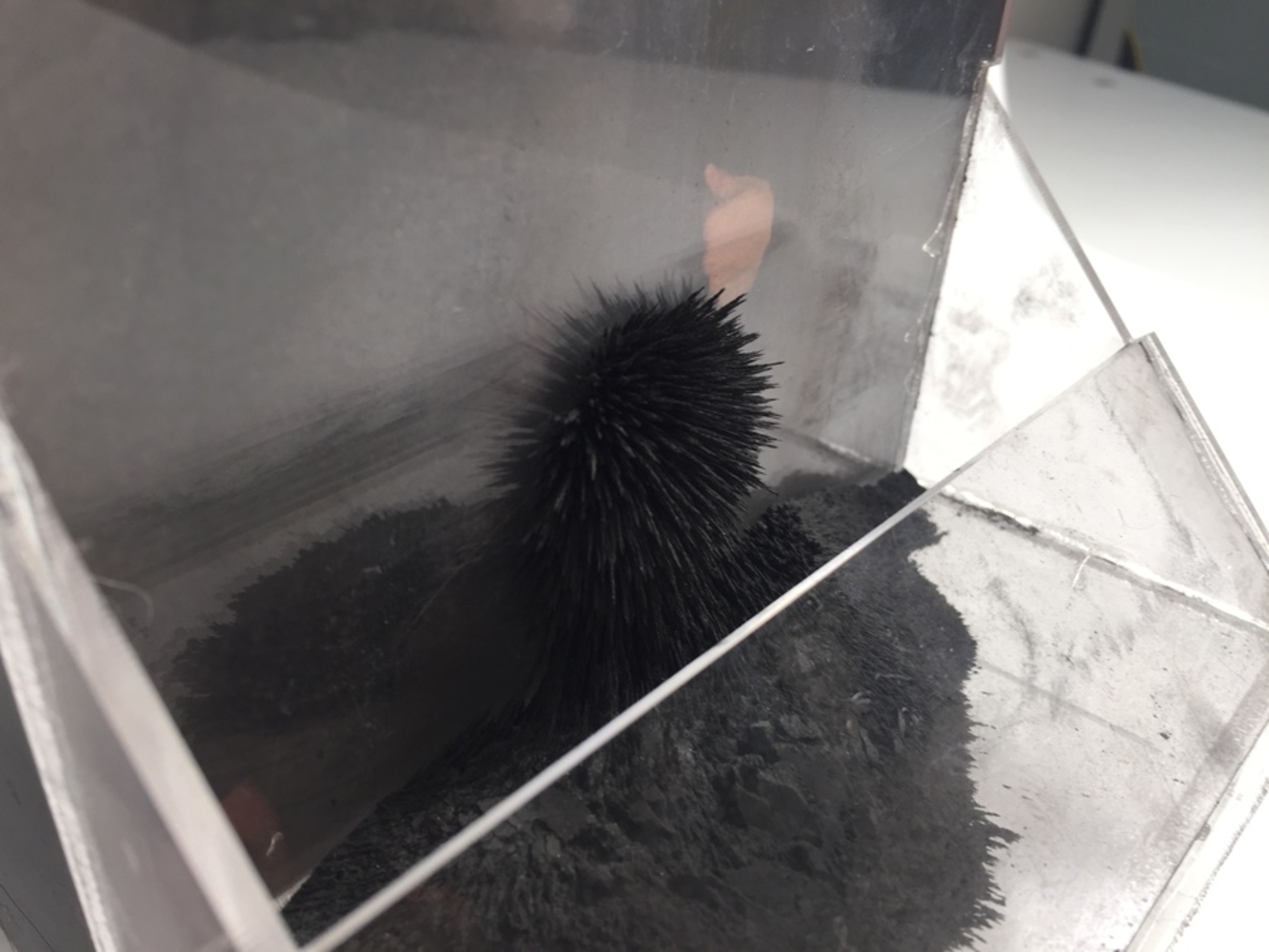Concept
The goal of this project is to provide an avenue for people, suffering after a break up, to resist the urge to check up on and stalk their ex-partner on social media. We built on this concept by prototyping an interpretation of a picture frame: magnetic particles would grow into a sculpture over a picture of the broken couple, but if the person looked at their ex on social media, then the particles would fall and reveal the original image. In this way, we essentially created a mental health barometer, a status bar that would keep the person accountable for moving forward with their progress in recovering from the break up. This prototype was explored further in context via a critical design video, where we detailed the process of a person receiving the present as a gift from a friend, slowly getting over the breakup, and moving on with their life.
